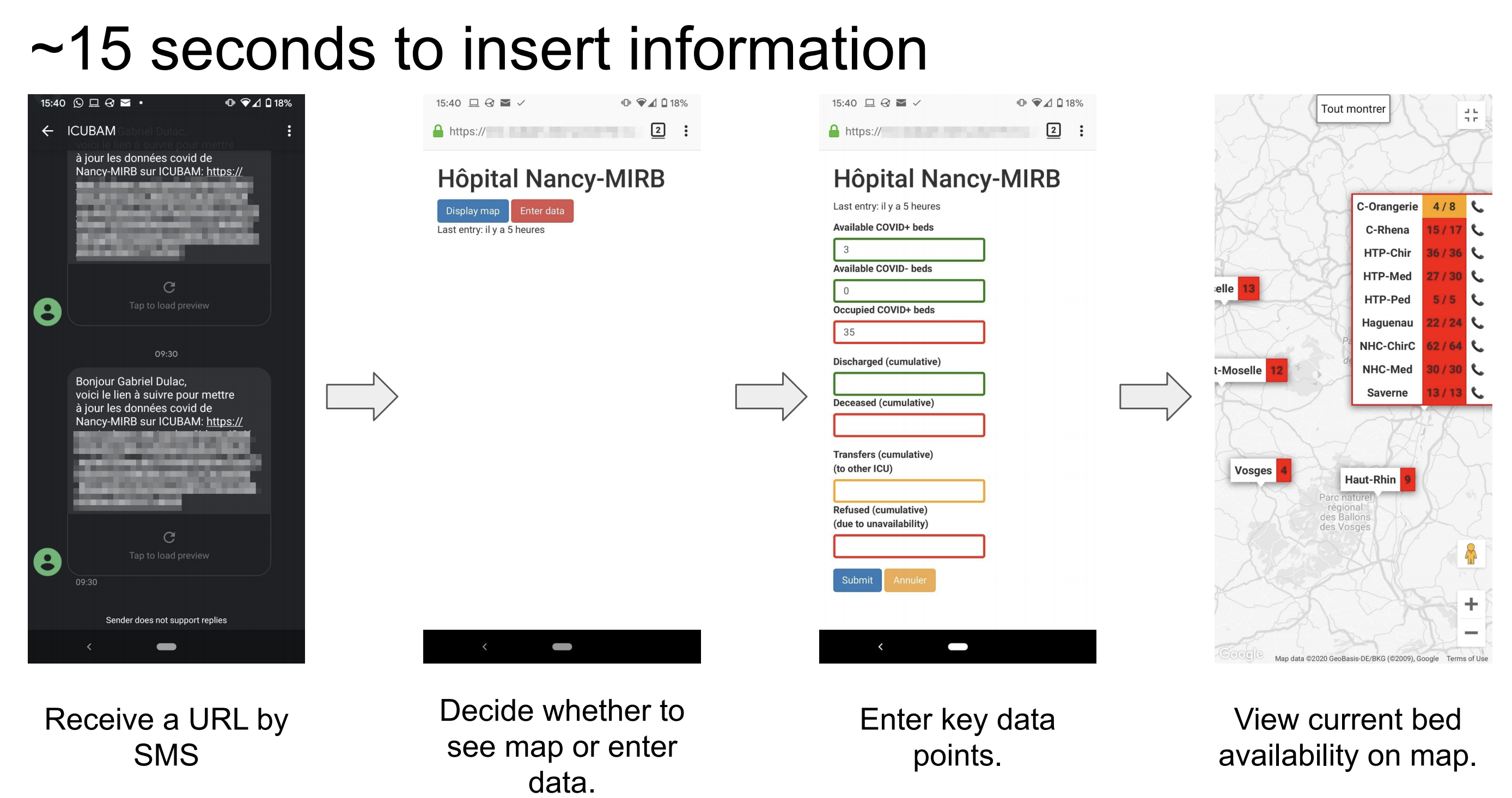ICUBAM's goal is to provide real-time information on intensive care unit (ICU) bed availability in French hospitals. Data is directly obtained from doctors working inside ICU by sending them SMS with a HTTP link to a form that they can fill in 15 seconds.
ICUBAM a pour objectif de fournir des informations en temps réel sur la disponibilité des lits dans les unités de soin intensif (USI) des hôpitaux français. Les données sont obtenues directement des médecins qui travaillent dans les USI en leur envoyant des SMS avec un lien HTTP vers un formulaire qu'ils peuvent remplir en 15 secondes, montre en main.
This software stack is currently being used by the ICU system in Eastern France to help manage the COVID crisis.
The project was co-built by ICU Doctors from CHRU Nancy/Université de Loraine and engineers from INRIA & Polytechnique. It was fleshed out live during the Covid crisis in Eastern France to answer an urgent need for finding available ICU beds in a saturated and deteriorating situation. At the time of writing, 5 engineers are working full-time, 7 days a week, on the project, in direct contact with the team of ICU doctors on the ground.
Most of the data handled by ICUBAM is less than 1 hour old. ICUBAM integrates with the ministry of health (only ARS Est for now)'s back-end system for
- sending data upstream to inform authorities,
- and retrieving data to synchronise with other data sources.
This software is open-source and made available on
GitHUb. See the documentation for more details: docs.icubam.net.
It will soon be released as a one-click deployable docker container.
You can contact the team for deployment information or general experience sharing at contact@icubam.net. The ICUBAM paper is also available on medRxiv.
This project is a collaboration between INRIA, Polytechnique, CHRU Nancy, Université de Lorraine & individual contributors.

